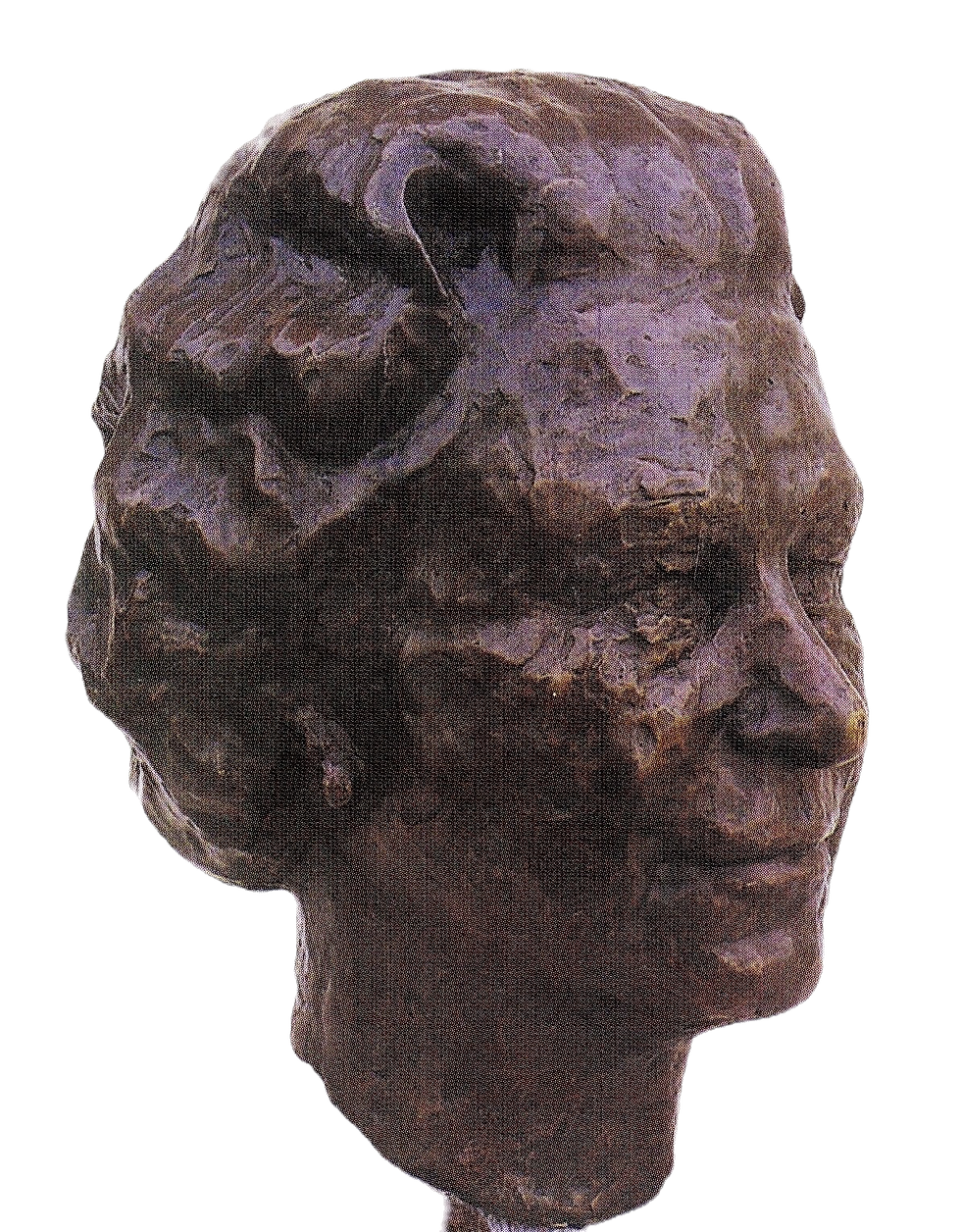Faces in History

In 1986 Dr. Sackler invited Cregeen to undertake the project, ‘Faces in History’: twenty portrait heads of some of the world-renowned men and women of our time selected from differing walks of life.
"This prestigious and uniquely challenging work has been a major theme running through Cregeen’s professional life. As the collection is completed it is now possible to appreciate those distinctive hallmarks of portrait sculptures, largely undertaken from life, a remarkable collection and a roll call of honour.
It includes Queen Elizabeth II, Pope John Paul II, President Nelson Mandela, Baroness Thatcher, President Anwar Sadat, Professor Stephen Hawking, Yehudi Menuhin, Prima Donna Maria Callas, Sir John Gielgud and businessman and philanthropist Sakip Sabanci an outstanding contributor to his country, Turkey where Cregeen has had his studio for many years. ......
The two leading iconic figures of the British Commonwealth: Queen Elizabeth II, its Head, and the late President Nelson Mandela were selected at the start of the project ‘Faces in History’.
Queen Elizabeth II gave five sittings at Buckingham Palace. With its strong planes the portrait head depicts an assured Sovereign Head of State who led the Commonwealth for more than seventy years. One of the edition is at the headquarters of the Commonwealth Secretariat in London, another in the Royal Collection at Buckingham Palace.
A portrait head of President Mandela was selected for inclusion in ‘Faces In History’ when he was still a prisoner on Robben Island. Following his release Chief Emeka Anyaoku, then Secretary-General of the Commonwealth, obtained his agreement to be sculpted by Cregeen for ‘Faces in History.
This highly expressive head of the late President was undertaken in the context of the Heads of Government Conference of The Commonwealth which on that occasion took place in Edinburgh. (Lois Katz DAVID CREGEEN-HIS WORK. 2018).
‘The bronze has a terrific presence and absolutely radiates the African leaders experience, laughter and energy’. (Lois Katz.1999)
"Cregeen’s head of Pope John Paul II was made in the last few years of the Pontiff’s life. Cregeen was given the opportunity to observe closely, to draw and to model a 'macquette' in the context of the Papal Audiences. From these he then created an extraordinarily powerful and moving portrait head modelled with expressive plasticity: the face of a man of vision, humanity and insight. It is a legitimate heir to those other artists’ portraiture of Pontiffs over proceeding centuries.....
The head of Professor Stephen Hawking who with remarkable determination overcame overwhelming odds to survive and to become one of the greatest scientists of the 20th century exudes that energy and determination, a buoyant spirit and almost youthfulness which characterised him throughout his life.....
The sculptor met Lord Yehudi Menuhin at the maestro’s home in London where he made drawings to use in doing the portrait head. The purpose of the meeting was to discuss Menuhin’s support for an initiative for Cregeen to create posthumous portrait heads of the President Sadat of Egypt and Prime Minister Yitzhak Rabin of Israel to be shown together as a contribution to the peace process there. The proposal was endorsed by the then US Secretary of State Strobe Talbott and Madame Sadat and by Lord Menuhin who strongly supported the proposal writing to the sculptor that they 'knowingly took great personal risks and paid the ultimate price for their remarkable and historic act of courage'. ...... (letter from Lord Menuhin to the sculptor. 7th March 1999)
Regrettably the initiative failed to move forward as the situation there deteriorated but the heads were then included in 'Faces in History'.
Different in temperament but with similarities in technique it is appropriate that the heads of Maria Callas and Sir John Gielgud should jointly represent the theatre in “Faces in History”; the former posthumous, the latter from life was sculpted with sittings at Cregeen’s London studio on the South Bank. The final sitting took place following the memorial service to Sir Lawrence Olivier with Gielgud present.
Epstein sculpted Gielgud in the early 1930’s, Cregeen in 1989, the two works spanning six decades of that dramatic career from its beginning to its ending. The expressively worked portrait head with its slight tilt has a gravitas that captures the distinct character of one of the greatest classical actors of the 20th century. One of the edition of the Gielgud head is now in the actor's former house, South Pavilion, the country home to Former Prime-minister Tony Blair and his wife Cherie, where there is also one of Jacop Epstein’s great master pieces-‘The Visitation’.''
(From Lois Katz- DAVID CREGEEN- HIS WORK)
BACK TO




Dr Arthur M. Sackler was introduced to David Cregeen and his work in the course of the Edinburgh International Festival in 1981.
In 1983 Dr Sackler commissioned Cregeen to sculpt his wife, Jillian Sackler and then himself. An edition of the later is now at the National Portrait Gallery, Washington DC.
Sackler was a Renaissance man. He was involved in the arts, sciences and humanities, an art collector extraordinaire and a benefactor to many museums, and scientific and cultural institutions.
The finished portrait bronze, 1984, reflects Sackler’s intensity, his intelligence and his vision. It is an expressionistic piece, the surface loosely modelled with the light creating tonal contrasts in the depths and crevices of the roughly hewed surfaces. In the created image Cregeen has captured the liveliness and complexity of Sackler’s personality. Determination and scholarly intensity are expressed by the thrust of the chin and the high forehead. But it is the eyes that reflect the man in life: they look to the future and sparkle with the pleasure of its challenge." (Katz 1986)



